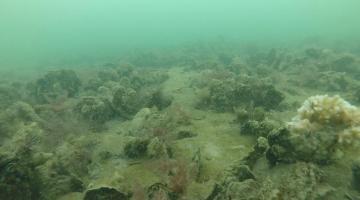Oceans and coastal ecosystems support an incredible diversity of fish and invertebrates that have sustained human societies for millennia through fisheries and aquaculture. These species are key players driving ecosystem structure and function, but human activities threaten the productivity and diversity of marine life. In the Anthropocene, finding a balance between harvest and conservation of fish and invertebrates, and mitigating other human impacts on marine ecosystems, will be key to sustaining productive, resilient, and biodiverse coastal and marine ecosystems. We address broad problems of population and community ecology using long-term quantitative sampling, animal behavior/movement studies, and innovative experiments at multiple spatial and temporal scales. Our studies analyze human impacts and natural change in freshwater, estuarine and marine systems.
Fish and Invertebrate Ecology
- Home
- Research
- Laboratories
- Fish and Invertebrate Ecology

Tracking Cownose Ray migrations in Chesapeake Bay.
Principal Investigator







